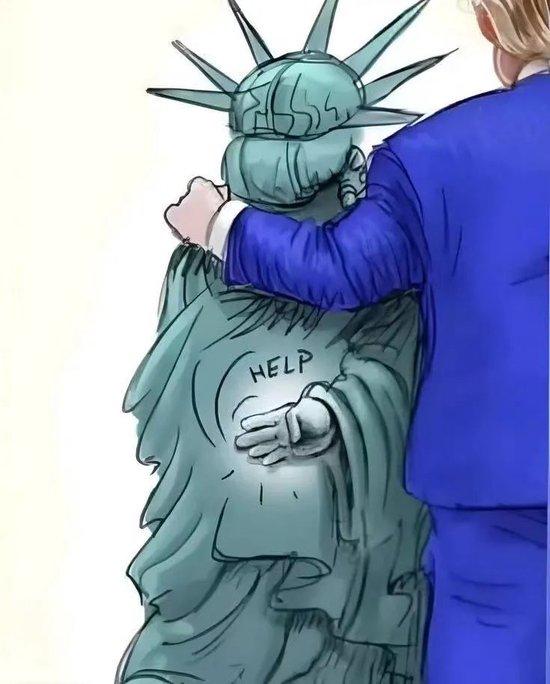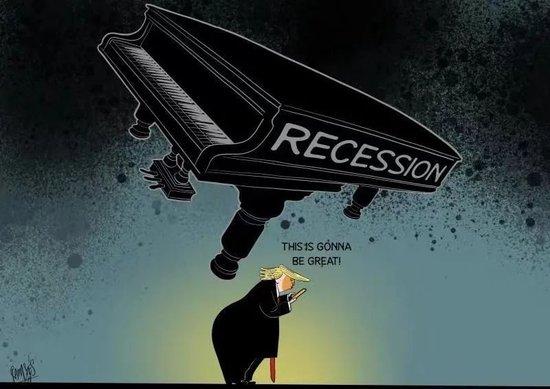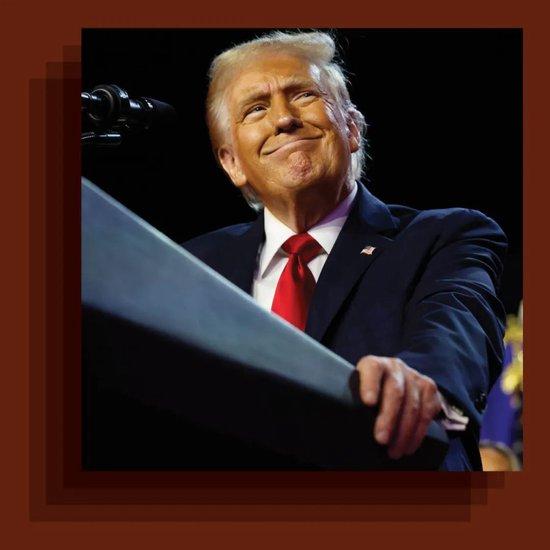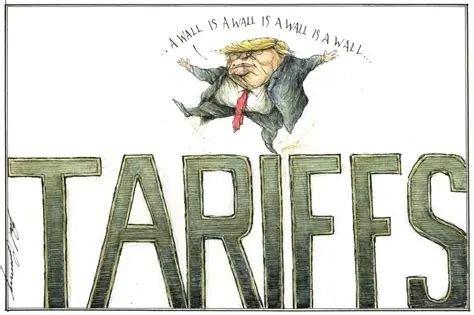



Upon waking, Trump wrote 14 letters.
Not long, straightforward, and finally, he signed them with his iconic wooden-twig signature. Just looking at the content of these letters, it’s quite amusing.
The first one was to Japan, addressed to Japanese Prime Minister Yoshihide Suga.
As the saying goes, “A unique work is appreciated,” let’s take a look at this open letter from the President of the United States to the Japanese Prime Minister.
I am very honored to write to you, as it reflects our strong and firm trade relationship, and also shows that despite having a significant trade deficit with your country, the United States of America still decides to continue cooperating with you.
However, we have decided to move forward together with you, but only on the premise of achieving more balanced and fair trade.
Therefore, we sincerely invite your country to join the incredible economic system of the United States, which is the world’s leading market in terms of scale to date.
It seems polite, but always remember to boast about America.
We have been discussing our trade relations with Japan for many years and concluded that we must break free from the long-standing and very stubborn trade deficit caused by Japan’s tariffs, non-tariff policies, and trade barriers.
Regrettably, our relationship is far from reciprocal.
Starting from August 1, 2025, we will impose a 25% tariff on all Japanese products entering the United States, independent of all industry tariffs. Goods transported to avoid higher tariffs will be subject to higher tariffs.
Please understand that this 25% amount is far from sufficient to eliminate our trade deficit with your country. As you know, if Japanese or your company decides to manufacture products in the United States, there will be no tariffs.
In fact, we will do everything possible to obtain relevant approvals quickly, professionally, and routinely—in other words, the entire process will be completed within weeks.
If for any reason you decide to raise tariffs, then regardless of how much you choose to increase them, they will be added to the 25% we currently charge.
Please understand that these tariffs are necessary to correct the trade imbalances and non-tariff policies implemented by Japan over many years, which have led to a persistent U.S. trade deficit.
This deficit poses a significant threat to our economy, and even more so to our national security!
After making a lot of points, the key is to impose a 25% tariff, and Trump emphasized, only, not much.
This is the basic tariff, without industry tariffs, such as automobile tariffs or steel/aluminum tariffs, not stacked.
Of course, there are still threats if Japan refuses, if Japan wants to retaliate, then the U.S. will impose higher tariffs.
What’s funny is, Trump accused the U.S. trade deficit with Japan of posing a significant threat to its national security.
Well, the United States is the most powerful country in the world, acting as a minor player.
Japan, you have also posed a significant threat to the U.S. national security.
And this isn’t over yet; Trump continued:
We look forward to establishing a long-term trading partnership with you.
If you are willing to open up previously closed trade markets to the U.S. and eliminate your tariffs, non-tariff policies, and trade barriers, we might consider adjusting the content of this letter accordingly.
These tariffs may be adjusted based on our relationship with your country, whether it’s an increase or decrease. You won’t be disappointed with the U.S.
Thank you for your attention to this matter!
Well, the tariffs can go up or down depending on how you perform.
Upon reviewing 14 letters, they are almost identical, except for the different tariff numbers.
The first batch was written to Japanese Prime Minister Shinzo Abe and South Korean President Moon Jae-in.
Like Japan, South Korea was also subject to a 25% tariff.
Remember April 2nd when Trump imposed taxes on the world, initially a 24% tariff on Japan, which has now been raised by another percentage point.
The second batch, addressed to the leaders of five developing countries.
Kazakhstan, 25%;
The third batch, totaling seven letters, respectively:
Indonesia, 32%;
Among these, the lowest 25%, and the highest 40%.
Pitifully, high tariffs are imposed on poor nations, with Myanmar and Laos being the least developed countries yet subject to the highest tariff rate of 40%.
What’s amusing is that before revealing the tariff rates in his letters to foreign leaders, Trump uses this term, as the Associated Press puts it, “to imply he was generous with tariffs.”
Even more amusing is that all 14 letters use a template, leading to some leaders’ gender being mistaken, such as in Ricarda Zvianovac’s letter, where Trump refers to her as “President Mr.”
Ah, diplomacy is not trivial matters; how did the White House handle this?
If Bosnia and Herzegovina leaders refer to Trump as “Mr. President,” you can bet Trump would lose his temper!
However, considering the new tariffs set to take effect on August 1st, as the Associated Press puts it,
“These letters are not Trump’s final decisions but rather another episode in his central role in the global economy drama.”
“He mixes his aggressiveness with willingness to negotiate, indicating that drama and uncertainty may continue, and Trump has almost nothing finalized.”
In a word, the only thing we can be certain of in the world is Trump’s uncertainty.
Among the 14 countries, there’s Serbia from Europe, but not from the EU.
The EU spokesperson responded, “We will not comment on the letters that have not been received.”
The EU is waiting, while Trump keeps his cards close to his chest.
Of course, Trump originally set the end date for negotiations at July 9th, now it’s been moved to August 1st, giving time for further negotiations.
These letters are merely new threats from the US, but will they work?
Anyway, the U.S. stock market plummeted again on the 7th, marking its worst performance in three weeks; many American media are concerned that this will exacerbate inflation and increase the burden on the public. The Federal Reserve is even more hesitant to ease interest rates.
Oh, Trump had criticized the BRICS countries the day before yesterday for “backing the U.S.” and threatened to impose a 10% new tariff on countries aligned with the BRICS’ anti-U.S. policy.
I saw, Brazilian President Luiz Inácio Lula immediately stated:
I don’t even think I should comment. Trump needs to understand that the world has changed, and the United States can now impose tariffs, as can other countries.
Russian former President Dmitry Medvedev said, in response to Trump’s threat,
meaning “everything we do is correct,” and the BRICS countries are demonstrating authority.
I saw, our Foreign Ministry spokesperson Mao Ning also responded on the 7th, saying:
Regarding tariffs, China has already made clear its stance multiple times. A trade war or tariff war has no winners, protectionism has no solution…
Let’s just keep it up.
Without the hassle, how could we make headlines? How could we show dominance? How could we be like the current U.S.?
But historically, many superpowers have only managed to exhaust their resources by themselves.